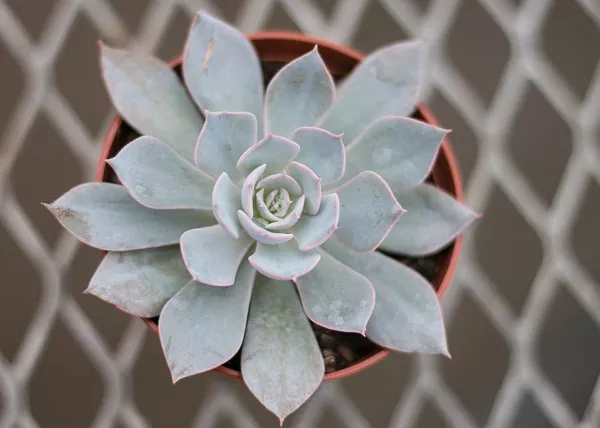Succulents, with their unique shapes and captivating colors, have gained popularity among plant enthusiasts and interior decorators. However, the beauty of these plants can be marred by the presence of mealybugs, tiny pests that can wreak havoc on succulent collections. Understanding the factors that contribute to mealybug infestations is essential for maintaining the health and vitality of your beloved succulents. This article delves into the intricate world of mealybugs, exploring the causes behind their appearance on succulents, the signs of infestation, and effective prevention and control strategies.
The Culprits: What Are Mealybugs?
Mealybugs are small, soft-bodied insects belonging to the family Pseudococcidae. These pests are often found on a variety of plants, including succulents, where they feed on plant sap. Mealybugs are notorious for their cottony, waxy secretions that provide them with protection from predators and environmental stressors. They are known to reproduce rapidly and can spread quickly to other plants, making timely intervention crucial.
Causes of Mealybugs on Succulents
Several factors contribute to the appearance of mealybugs on succulents. Understanding these causes can help you prevent and manage infestations effectively:
1. Overcrowding and Poor Air Circulation: Succulents that are crowded together or lack proper air circulation can create a favorable environment for mealybugs. The pests can easily move from one plant to another, leading to rapid infestations.
2. Overwatering: Excessive moisture in the soil and around the base of succulents can attract mealybugs. These pests thrive in humid conditions, and overwatering can create an environment conducive to their growth.
3. Plant Stress: Stressed succulents are more susceptible to mealybug infestations. Stress can result from factors such as poor lighting, inadequate nutrients, and improper care practices.
4. Unsanitary Conditions: Dust, debris, and decaying plant material around succulents can attract mealybugs. Keeping the growing area clean and removing debris can help prevent infestations.
5. Transport and New Additions: Mealybugs can be introduced to your succulent collection through new plants or contaminated tools. Inspect new additions thoroughly before integrating them with your existing plants.
Signs of Mealybug Infestation
Detecting a mealybug infestation in its early stages is crucial for effective control. Look out for the following signs that indicate the presence of these pests on your succulents:
1. White Cottony Masses: Mealybugs are often recognized by the white, cottony masses they produce, which can be found on plant stems, leaves, and in leaf axils.
2. Leaf Distortion and Discoloration: Infested succulents may exhibit distorted growth, curling leaves, and abnormal discoloration. The feeding activity of mealybugs can lead to these visible symptoms.
3. Sticky Residue: Mealybugs excrete a sticky substance called honeydew, which can attract ants and promote the growth of sooty mold on leaves.
4. Wilting and Stunted Growth: Severe infestations can cause succulents to wilt, exhibit stunted growth, and experience overall decline.
Prevention and Control Strategies
Preventing and managing mealybug infestations on succulents require a combination of proactive measures and careful interventions:
1. Quarantine New Plants: Before introducing new succulents to your collection, isolate them for a few weeks to monitor for any signs of mealybugs or other pests.
2. Proper Watering: Ensure that your succulents are watered appropriately, allowing the soil to dry between waterings. Avoid overwatering, as damp conditions can attract mealybugs.
3. Regular Inspections: Routinely inspect your succulents for signs of mealybugs. Pay close attention to plant crevices, leaf axils, and the undersides of leaves.
4. Pruning and Isolation: If you identify an infested plant, consider isolating it from the rest of your collection. Prune and discard heavily infested parts to prevent the pests from spreading.
5. Natural Predators: Introduce natural predators like ladybugs, lacewings, or parasitic wasps to help control mealybug populations.
6. Homemade Solutions: Mild soap and water solutions or alcohol-soaked cotton swabs can be used to gently wipe off mealybugs from plant surfaces. Be cautious and test on a small area before treating the entire plant.
7. Chemical Treatments: If infestations are severe, consider using insecticidal soaps or horticultural oils labeled for mealybug control. Follow the instructions carefully and apply in well-ventilated areas.
Conclusion
Mealybugs can pose a significant threat to the health and aesthetics of your succulent collection. By understanding the causes of mealybug infestations, recognizing the signs of their presence, and implementing preventive measures, you can protect your succulents from these persistent pests. Regular inspections, proper care practices, and timely interventions are essential in maintaining the vibrancy and longevity of your cherished succulents. As you navigate the delicate balance of plant care, remember that a watchful eye and proactive measures are your allies in creating a thriving and pest-free succulent haven.


